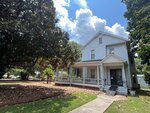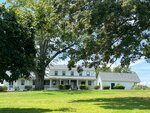Landmarks found in Chapin and Irmo recognized by National Registry of Historic Places
Lexington County is filled with rich history that helped establish life today as we know it. Every part of Lexington County has a unique story to tell, and no story is ever the same. While many are …
This item is available in full to subscribers.
Subscribe to continue reading. Already a subscriber? Sign in
Get 50% of all subscriptions for a limited time. Subscribe today.
Please log in to continueNeed an account?
|
Landmarks found in Chapin and Irmo recognized by National Registry of Historic Places
Lexington County is filled with rich history that helped establish life today as we know it. Every part of Lexington County has a unique story to tell, and no story is ever the same. While many are drawn to the towns of Chapin and Irmo because of Lake Murray, its history is not to be missed. While popular dining spots, schools and festivals, like the Irmo Okra Strut and the Chapin Labor Day Festival, make these towns thrive, we must not forget its early establishment that put Irmo and Chapin on the map of history. Here are two structures within the lakefront towns of Lexington County that are recognized by the National Registry of Historic Places:
Robinson-Hiller House (311 Virginia St., Chapin)
Showcasing its beautiful Queen Anne style architecture, the Robinson-Hiller House is tucked away right off the main streets of Chapin. Built in 1902, the charming two-story house features a wrapped around front porch, slender Tuscan columns that support the porch’s roof and an inviting turret on the left side of the house. Not only not known for its beauty, the home is also significant for its original occupants, Charles Plumber Robinson and his wife Sarah “Eddie” Smithson Robinson. According to the National Registry, Charles Robinson was a prominent merchant of Chapin and Lexington County during the early twelfth century. “Robinson founded C.P. Robinson Lumber Company, a sawmill and building products company which included a lumberyard and a brickwork; he also later owned and operated a mercantile store, cotton gin, corn mill, and roller mill,” according to nationalregister.sc.gov. His various business interests made Robinson a major employer within the Chapin community. His wife, Sarah Robinson, was also significant for her participation with the Christian Temperance Union where she served as a social activist and officer. You can now find the Robinson-Miller House being used as a medical spa, About Face Aesthetics and Wellness. The house was listed on the National Registry of Historic Places on May 18, 1998.
Jacob Wingard Dreher House (224 Windward Point Rd., Columbia)
Tucked away underneath a canopy of trees towards the Irmo side of Lexington County, the Jacob Wingard Dreher House sits pretty as a perfect representation of a Lexington County Antebellum farmhouse. Now referred to as Glencoe Farm, the beautiful white farmhouse is associated with the Dreher family, a prominent Dutch Fork family that can trace their roots from early German Pioneers. Jacob Wingard Dreher was a prominent farmer, storekeeper, magistrate and churchman during his lifetime. He and his wife, Ann Hiller, parented nine children. The house is believed to be constructed from 1830 to 1850, by Jacob Wingard Dreher or his father Daniel Dreher. The house showcases a two-story weather board frame with a front porch that stretches to both sides of the house. The house originally sat on 600 acres of land, until the land was mostly bought up by the Lake Murray project, according to nationalregister.sc.gov. The Dreher estate was established in 1926 and sits on 150 acres of grassy land and is just a stone's throw away from Lake Murray. The Jacob Wingard Dreher House was added to the National Registry on July 22, 1983.
Other items that may interest you












Comments
No comments on this item Please log in to comment by clicking here